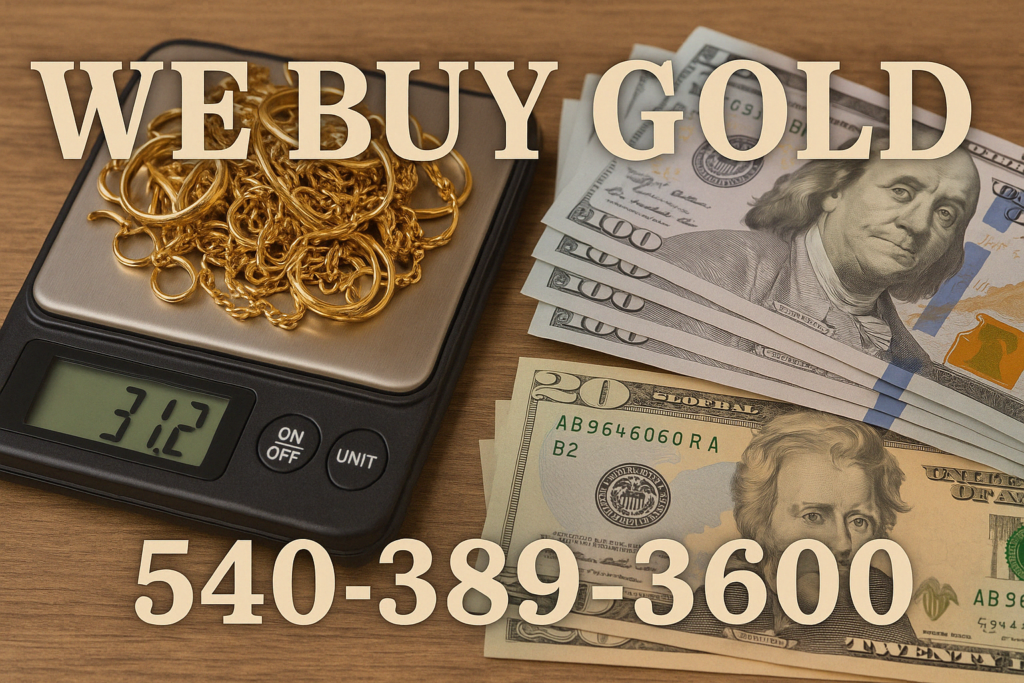What Is a Pennyweight?
If you’ve ever walked into a jewelry store, pawn shop, or gold buyer and heard the term pennyweight (often shortened to dwt), you might have wondered what it actually means—and more importantly, how it affects what you get paid when selling scrap gold or silver.
Let’s break it down so you know exactly how a pennyweight works, why it’s used in the industry, and how it factors into your payout.

📏 What Is a Pennyweight (dwt)?
A pennyweight is a unit of mass that equals 1/20 of a troy ounce, which is the standard ounce used in precious metals (not the same as a regular “grocery store” ounce).
Here’s the breakdown:
-
1 pennyweight (dwt) = 1.555 grams
-
1 gram = 0.64301 dwt
-
1 troy ounce = 20 dwt = 31.1 grams
So, when you bring in gold or silver to sell and the buyer says it weighs “5 dwt,” that means it weighs 7.775 grams.
💰 Why Is Pennyweight Used When Buying Scrap Gold and Silver?
Great question. Most people are familiar with grams or ounces—but the precious metals industry uses pennyweight because:
-
It allows for precise pricing of smaller gold amounts
-
Jewelers and refineries have used it traditionally for centuries
-
It aligns with the troy weight system, which is standard for gold, silver, and platinum
In short, pennyweight is just an industry-standard unit of measure—especially in the U.S.—that helps buyers and sellers work off accurate, standardized pricing for precious metals.
🧮 Does Pennyweight Affect My Payout?
It doesn’t affect your payout by itself—but the unit conversion can be a trick some less-reputable gold buyers use to confuse or underpay sellers.
Here’s an example of how confusion can happen:
Let’s say you have 10 grams of 14k gold.
You go to one buyer who weighs it in grams.
You go to another who weighs it in pennyweight.
If you don’t know that 10 grams = 6.4301 dwt, you might think one buyer is offering more—but really, they’re just using different units.
The key takeaway:
Always compare apples to apples—know how to convert between grams and pennyweight, and ask what your gold is being weighed in.
At Lucky’s Coins, we always weigh your gold in front of you, show you the math, and make sure you understand the price you’re getting.
⚖️ Pennyweight vs Grams – Which Is Better?
Both are valid. What matters most is transparency and accuracy.
Some buyers prefer grams. Others stick to dwt. The important thing is that:
-
The conversion rate is accurate
-
The spot price of gold/silver is being used
-
The buyer clearly explains how your payout is calculated
At Lucky’s Coins, we’ll happily show you the value in both grams and pennyweight, so you can make the best decision.
💸 Selling Gold or Silver? Know What You’re Being Paid For
When you’re selling scrap gold, silver, or jewelry, the payout you receive is based on:
-
Weight (grams or pennyweight)
-
Purity (karat or percent fine)
-
Current market price
-
The buyer’s margin or payout rate
Understanding pennyweight just gives you another tool to make sure you’re getting paid fairly. And that’s always a win.
📍 Sell Gold and Silver with Confidence at Lucky’s Coins
We buy scrap gold and silver every day—and we keep it honest.
Whether you bring us your gold in grams or want to see the weight in pennyweight, we’ll:
-
Test your item’s purity
-
Weigh it in front of you
-
Calculate the value using current market prices
-
Offer you cash on the spot
